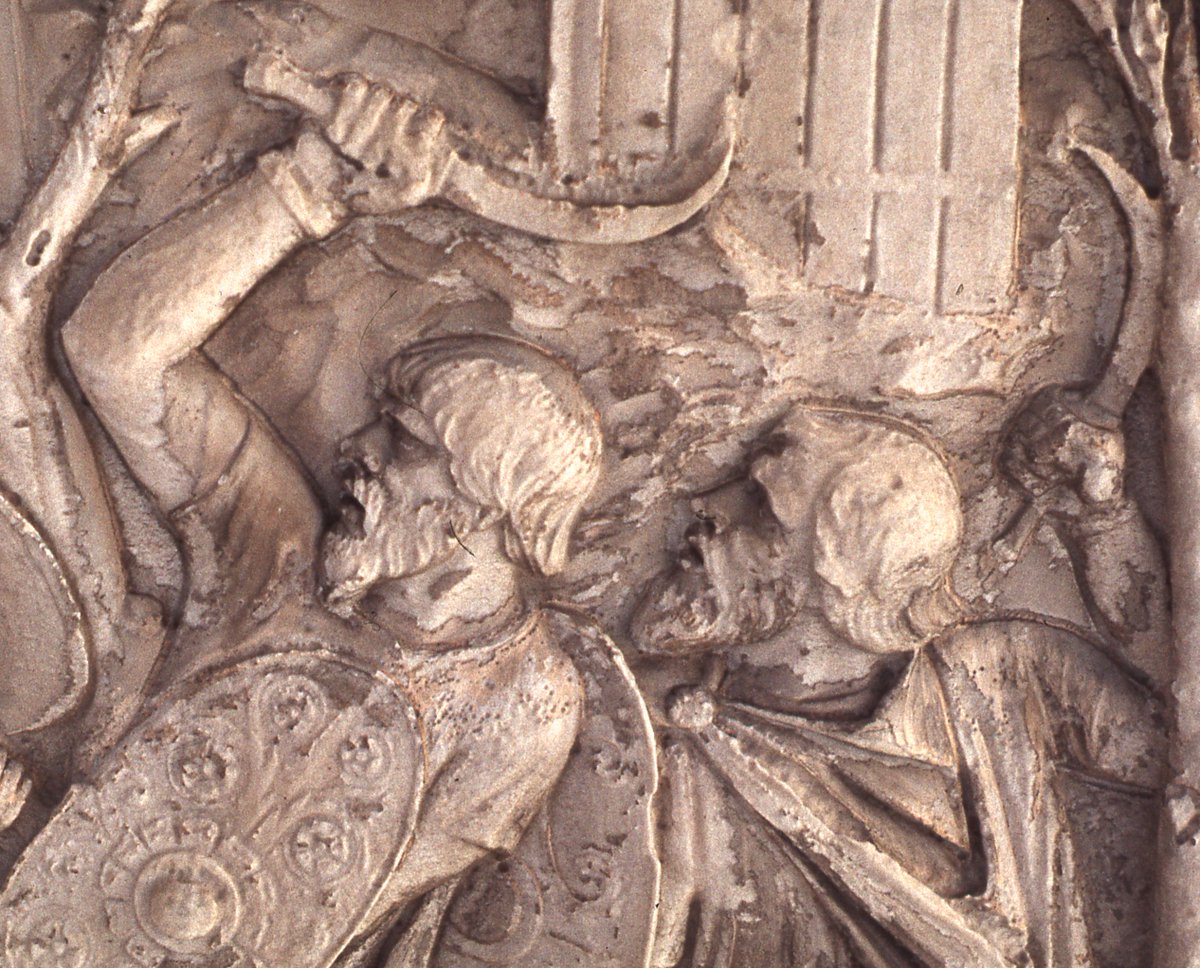If you were an average #Roman, you would have had only basic facilities to cook in your apartment - so most Romans lived on takeaways. You may have popped along to your local Popina (Wine Bar) which usually had a limited menu of simple foods like olives, bread and stew. 

Popina's did not have the best of reputations and were often associated with illegal and immoral behaviour. As well as food and drink, sex was often also on offer and also gambling, even though gambling with dice was illegal 

For a more substantial takeaway menu, #Romans could go to a thermopolium (cook shop) - it offered a more varied fast food menu served at a counter - just like this one, the Thermopolium of Vetutius Placidus from Pompeii. 

Thermopolia were found throughout the #Roman Empire. Food and drink was kept in earthenware jars embedded in the holes in the counter, helping to keep them warm. The food they served was designed to be eaten on the move 

Cauponae and tabernae were a form of #Roman tavern with both offering eat-in food & drink. Cauponae also offered overnight accomodation. Staff cooked food on simple braziers & customers could stand at the bar or take a table or a secluded booth to eat their meal. 

If you were in the Roman military, you may have had a cooking set that could enable you to cook over a fire. The one pictured here was recovered from #Trimontium and was used between 80-100AD by soldiers on the edge of the #Roman Empire in what is now the #ScottishBorders. 

• • •
Missing some Tweet in this thread? You can try to
force a refresh















